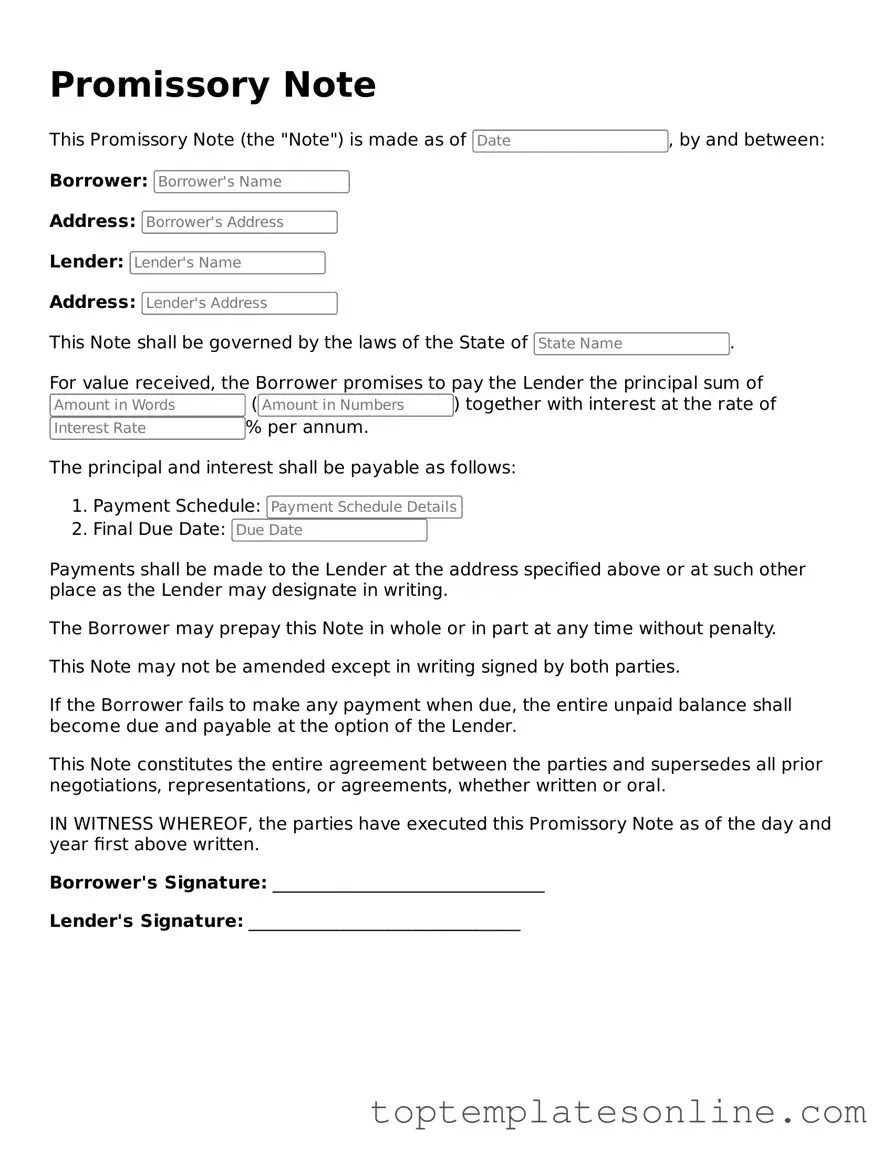Attorney-Approved Promissory Note Form
A promissory note is a written promise to pay a specified amount of money to a designated person or entity at a future date or on demand. This financial instrument outlines the terms of the loan, including the interest rate and repayment schedule. Understanding the structure and purpose of a promissory note is essential for both lenders and borrowers in any financial transaction.
Customize Promissory Note Here
